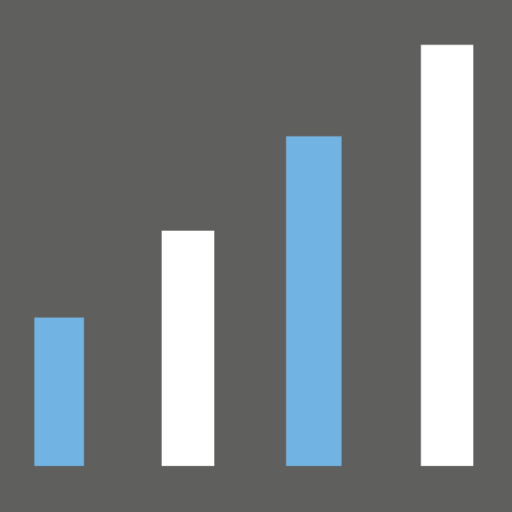Table of Contents
Market Overview
The global Pharmaceutical Water Purification Systems Market is witnessing substantial growth, driven by stringent regulations for water quality in pharmaceutical manufacturing and increasing demand for high-purity water in drug production. Pharmaceutical water purification systems are essential for removing contaminants, bacteria, and other impurities from water used in various pharmaceutical processes, including manufacturing, research, and laboratory applications. The Pharmaceutical Water Purification Systems Market includes technologies such as ion exchange, reverse osmosis (RO), and distillation, each offering specific advantages for different purification needs. The market is characterized by technological advancements, increasing adoption of advanced purification systems, and growing emphasis on sustainable water management practices.
Market Size and Forecast
The global Pharmaceutical Water Purification Systems Market was valued at US$ 2117 million in 2024. Projections indicate a robust growth trajectory, with the market expected to reach US$ 4461 million by 2031. This translates to a Compound Annual Growth Rate (CAGR) of 11.4% during the forecast period. The growth is attributed to the rising demand for purified water in pharmaceutical production and the increasing investments in pharmaceutical research and development. The Pharmaceutical Water Purification Systems Market demonstrates a promising outlook, driven by both regulatory compliance and the expanding pharmaceutical industry.
Growth Drivers
Several factors are driving the growth of the Pharmaceutical Water Purification Systems Market. Firstly, stringent regulatory requirements for water quality in pharmaceutical manufacturing are a major driver. Secondly, the increasing demand for high-purity water in drug production contributes to the need for advanced purification systems. Technological advancements in water purification technologies are also driving market growth. Additionally, the rising investments in pharmaceutical research and development and the growing focus on sustainable water management practices are boosting market expansion.
| Growth Driver | Description | Impact |
|---|---|---|
| Stringent Regulations | Strict water quality standards in pharmaceutical manufacturing. | Higher demand for reliable purification systems. |
| High-Purity Water Demand | Increasing need for ultrapure water in drug production. | Growth in advanced purification technology adoption. |
| Technological Advancements | Innovations in purification technologies like RO and ion exchange. | Improved efficiency and effectiveness of systems. |
Market Trends
Key trends in the Pharmaceutical Water Purification Systems Market include the development of energy-efficient purification systems, the integration of advanced monitoring and control technologies, and the increasing adoption of modular and scalable systems. Energy-efficient systems reduce operational costs and minimize environmental impact. Advanced monitoring and control technologies enable real-time monitoring of water quality and system performance. Modular and scalable systems offer flexibility and adaptability to meet changing production needs. These trends reflect the ongoing efforts to improve the efficiency, reliability, and sustainability of pharmaceutical water purification.
Opportunities in the Market
The Pharmaceutical Water Purification Systems Market presents several lucrative opportunities for manufacturers and technology providers. One significant opportunity lies in the development of systems that can efficiently remove emerging contaminants, such as pharmaceuticals and microplastics. Expanding the use of water purification systems in biopharmaceutical manufacturing also offers growth potential. Moreover, targeting emerging markets with rapidly growing pharmaceutical industries presents substantial opportunities. Investing in research and development to improve the performance and cost-effectiveness of purification technologies can further drive market growth. Addressing the specific needs of small and medium-sized pharmaceutical companies is another promising avenue for growth.
Regional Analysis
North America currently holds a significant share of the global Pharmaceutical Water Purification Systems Market, driven by stringent regulatory standards and a well-established pharmaceutical industry. Europe also represents a substantial market, with increasing investments in pharmaceutical research and manufacturing. The Asia Pacific region is expected to witness the fastest growth during the forecast period, fueled by the expansion of the pharmaceutical industry and increasing investments in healthcare infrastructure, particularly in China and India. South America and the Middle East & Africa are also emerging as potential markets, with growing pharmaceutical production and increasing awareness of water quality requirements.
| Region | Key Factors | Market Share |
|---|---|---|
| North America | Stringent regulations, established pharmaceutical industry | Significant |
| Europe | Increasing pharmaceutical R&D investments | Substantial |
| Asia Pacific | Pharmaceutical industry expansion, healthcare investments | Fastest Growing |
Segmentation by Type
The Pharmaceutical Water Purification Systems Market is segmented by type into ion exchange, reverse osmosis (RO), and distillation. Reverse osmosis systems currently dominate the market, owing to their high efficiency and versatility in removing a wide range of contaminants. Ion exchange systems are also widely used for specific applications, such as deionization. Distillation systems are employed for producing high-purity water for critical applications. Each segment is benefiting from technological advancements and the increasing demand for reliable purification systems. Manufacturers are focusing on developing integrated systems that combine multiple purification technologies to achieve optimal water quality.
Segmentation by Application
Based on application, the Pharmaceutical Water Purification Systems Market is segmented into laboratory, healthcare facilities, pharmaceutical industry, and others. The pharmaceutical industry segment accounts for the largest share of the market, as pharmaceutical manufacturing requires large volumes of high-purity water. Laboratories also represent a significant application segment, with increasing demand for purified water in research and analytical processes. Healthcare facilities utilize water purification systems for various applications, including dialysis and sterilization. The “others” segment includes applications in biopharmaceutical manufacturing and cosmetic production. The growth in these application segments reflects the increasing importance of water quality in various sectors.
Competitive Landscape
The global Pharmaceutical Water Purification Systems Market is characterized by the presence of several key players, including Puretech, NGK Insulators, Ltd, MECO, Tianjin Chaotuo Medical Equipment, LIVAM, AWS BIO PHARMA TECHNOLOGIES, Biopuremax, Honeyman Water, Pure Aqua, SUEZ, AQUAVISTA, and Pharmalab India. These companies are focusing on product innovation, strategic partnerships, and geographic expansion to strengthen their market positions. Competition is intensifying as more players enter the market, driven by the increasing demand for reliable water purification systems. Key competitive strategies include offering a diverse product portfolio, focusing on technological advancements, and expanding distribution channels to reach a wider customer base.
| Company | Key Strategies | Market Focus |
|---|---|---|
| Puretech | Product innovation, strategic partnerships | Advanced purification systems, global presence |
| SUEZ | Technological advancements, sustainability | Comprehensive water treatment solutions |
| Pharmalab India | Cost-effective solutions, regional expansion | Emerging markets, pharmaceutical industry |
Demand Forecast
The demand for Pharmaceutical Water Purification Systems is expected to continue growing strongly over the next decade, driven by the factors mentioned above. The increasing stringency of regulations, the growing demand for high-purity water, and technological advancements are all contributing to the sustained demand for these systems. The market is also expected to benefit from the development of new and innovative products that offer improved efficiency, reliability, and sustainability. Overall, the demand forecast for the Pharmaceutical Water Purification Systems Market remains highly positive, with significant opportunities for growth and expansion.
Challenges and Restraints
Despite the positive outlook, the Pharmaceutical Water Purification Systems Market faces certain challenges and restraints. One major challenge is the high initial investment cost of advanced purification systems, which can limit adoption by smaller pharmaceutical companies. Another challenge is the complexity of regulatory compliance, which requires expertise and resources to navigate. Additionally, the market faces competition from alternative water treatment technologies. Addressing these challenges will be crucial for sustained growth in the Pharmaceutical Water Purification Systems Market.
Future Outlook
The future of the Pharmaceutical Water Purification Systems Market looks promising, with continued growth expected over the next decade. The market is poised to benefit from the increasing stringency of regulations, the growing demand for high-purity water, and ongoing technological advancements. Key trends such as the development of energy-efficient systems, the integration of advanced monitoring technologies, and the increasing adoption of modular systems are expected to drive market innovation and expansion. Manufacturers who can effectively address the challenges and capitalize on the opportunities will be well-positioned for success in the Pharmaceutical Water Purification Systems Market.
| Aspect | Future Trend | Impact on Market |
|---|---|---|
| Technology | Development of more efficient and sustainable purification methods | Reduced operating costs, lower environmental impact |
| Regulation | Increasingly stringent water quality standards | Higher demand for advanced systems, greater compliance needs |
| Market Expansion | Growth in emerging markets with expanding pharmaceutical industries | New opportunities, increased global demand |





